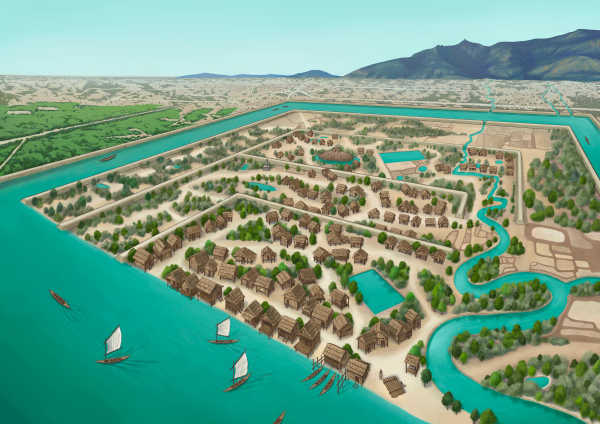
Sacred River
Published 2024.08.16 by 유다연
ອະທິບາຍ
The archaeological site of the ancient city is situated on the plains adjacent to the Mekong River. The city was surrounded by two layers of brick and earthen ramparts, with a moat in between. These ramparts measured approximately 2.4 km from north to south and 1.8 km from east to west, with the best-preserved sections standing up to 6 meters high and 14 meters thick. The walls and moats were likely constructed to manage and utilize the waters from the Phou Kao Mountains' tributaries.
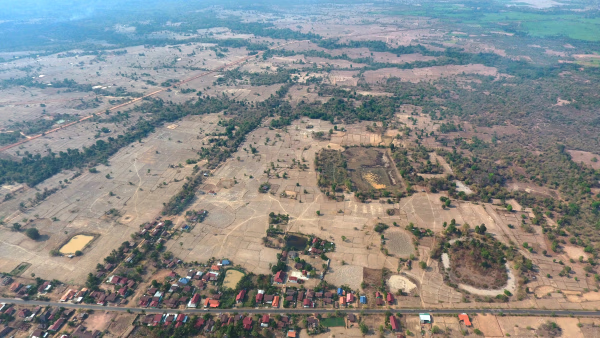
[Kurukshetra]
Traces of canals were discovered, suggesting that the city's water system was sophisticated, channeling water from three main tributaries into the moat and the city. The core area, where the present-day Vat Luang Kao village is located, was also surrounded by earthen walls and a small moat, likely the residential area for the ruling class.
Notably, inscriptions of King Devanika and Prince Citrasena were found here, which are crucial for understanding Southeast Asian history. These inscriptions, now displayed in the Vat Phou Museum, detail the establishment of the sacred city of Kurukshetra, reflecting its connections to the ancient Indian epic Mahabharata.
The city also featured a brick structure, possibly a temple, on an artificial mound, surrounded by barays and reservoirs, likely used for religious purposes. However, no evidence of daily life structures has been found, likely because traditional Lao stilt houses, which were prevalent at the time, leave few lasting traces.
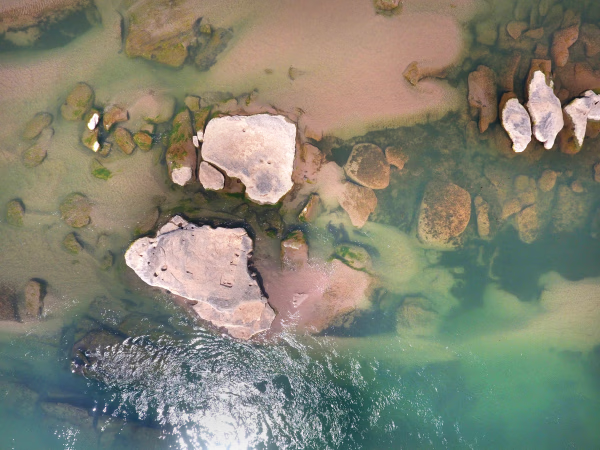
[Linga Rock of Khan Mak Houk]
One can embark on a cruise or take a local boat on the Mekong from the village of Vat Louang Kao or the town of Champasak to reach the Tomo Temple Complex located in a forest. As you cross the river, you can see the sacred rock of Khan Mak Houk, which submerges in the rainy season and rises in the dry season.

"A Thousand Names" (Skt. Sahasra-nāma) is the devotional book of hymns praising major Hindu gods like Shiva and Vishnu using 1,000 epithets. They illustrate the comprehensive and multi-dimensional attributes, virtues, and legends associated with a specific deity. Shiva is also praised by a thousand names and a thousand lingas (Skt. Sahasra-lingas) symbolizing those names have been carved on rocks in rivers and other holy places in ancient India and Southeast Asia. The famous Kbal Spean, commonly known as the Valley of a Thousand Lingas, is found along a 150m stretch of the Stung Kbal Spean River on the southwestern slopes of the Kulen Hills, not very far from Siem Reap, Cambodia. There are a series of carvings on rock, mainly myriad lingas along with various Hindu deities and mythological motifs. This river, which flows into Angkor, was believed to be as holy as the Ganges River in India. As it flows over the holy lingas, the Mekong River attains a sanctified status. The followers of Shiva who carved lingas and other Hindu deities on rocks in the middle of the Mekong River would have directed their prayers toward Lingaparvata.

[Tomo Temple Complex]
The Tomo Temple Complex is situated on the eastern banks of the Mekong River, near the village of Ban Tomo. This ancient site, named after the Tomo tributary, features ruins scattered over two artificial terraces overlooking the winding Tomo stream. The complex includes a variety of structures, with buildings and enclosure walls primarily constructed of laterite, a common material in Southeast Asia. The site is notable for its direct connection to the river, with well-preserved embankment steps still in use today.
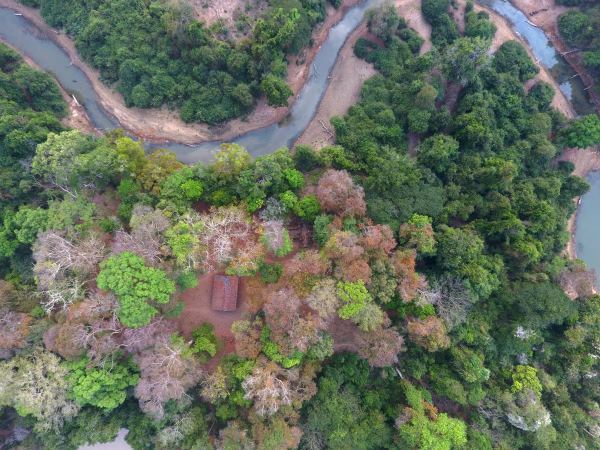
It is better defined as a monumental complex, which contains different types of buildings and embankment structures. Both the gopura and enclosure wall were constructed largely of laterite, a strong but relatively lightweight building material used frequently in ancient monuments throughout Southeast Asia. The monument was planned in such a way that it could be reached directly from the river, and there is a well-preserved monumental revetment running along the Tomo tributary.
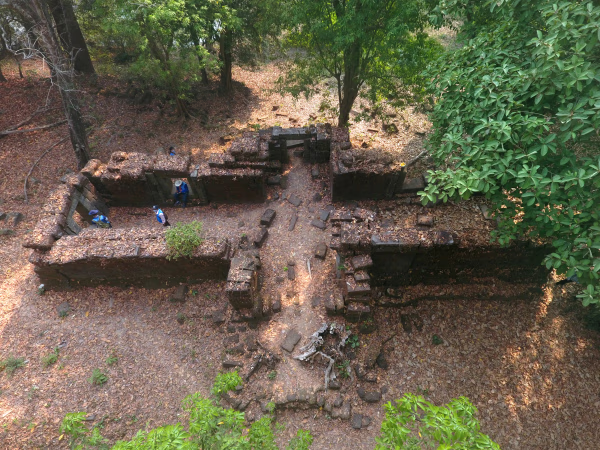
The enclosing wall and gopura, or gateway, were built of laterite blocks while the frames of doors and windows were of sandstone. Little is known about this monument. One inscription (K 362) related to King Yasovarman I (late 9th century) reveals the foundation of a monastery dedicated to Rudrani, one of the epithets of Shiva's consort, Parvati.
Many small brick temples, now collapsed, were present inside the area. The building style is related to the early 11th century, but some carvings and sculptures found in the area indicate the existence of older buildings. These stone ruins in the Mekong River may have been part of a Khmer-era retaining wall. The site boundary also includes similar other features.
ບົດທີ
ການນິດສະການທີ່ກ່ຽວຂ້ອງ
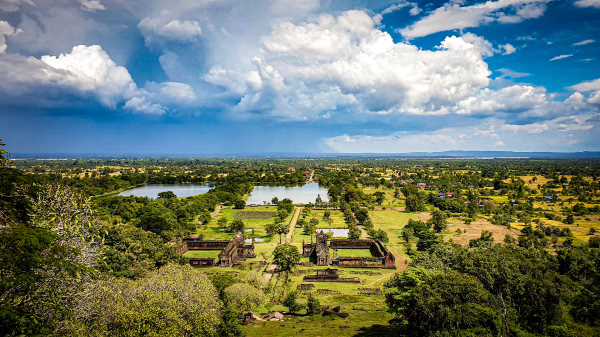
Natural History
Online Exhibition of the Vat Phou Champasak Ruins and the Excavation of Hong Nang Sida
The Vat Phou - Champasak site lies on fertile alluvial plains on the banks of the Mekong River, and its mountainous core is the eastern outlier of the Dângrêk Range, which is home to the Phou Kao Mountains that rise up to an altitude of 1,416 meters.
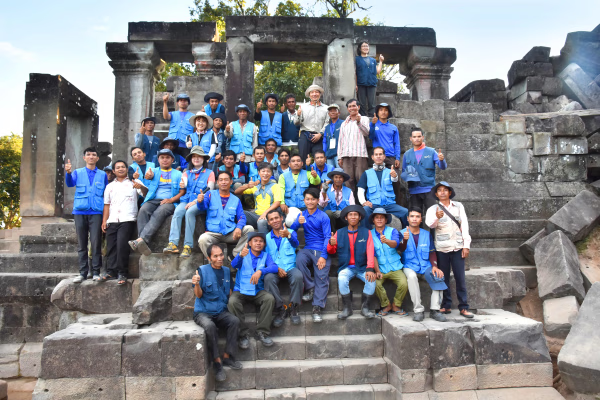
Natural History
Lao-Korea Cooperation Project : Hong Nang Sida Temple
Since 2013, the Cultural Heritage Administration and the Korea Cultural Heritage Foundation have been working on a heritage restoration project at the World Heritage Site “Vat Phou and Associated Ancient Settlements within the Champasak Cultural Landscape” in Lao PDR. The project focuses on restoring the collapsed stone structure called Hong Nang Sida, located in the southern part of the Vat Phou Temple Complex. This site, also known as the “Temple of Princess Sida,” is gradually regaining its original appearance thanks to the ongoing restoration efforts by a Korean research team.
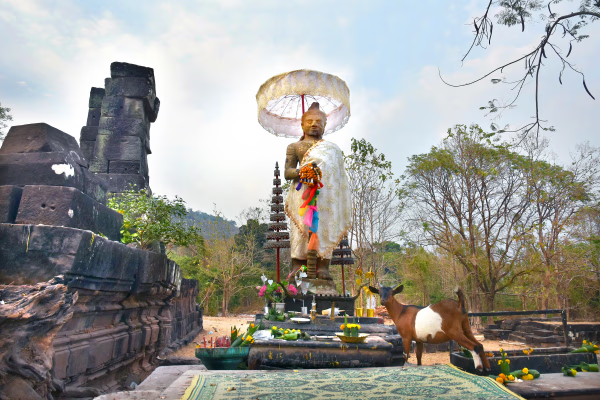
Natural History
Vat Phou-Champasak Site Exploration Itinerary
The pilgrimage journey from the World of Humans to the World of Saints, the World of Gods, and the World of Emptiness